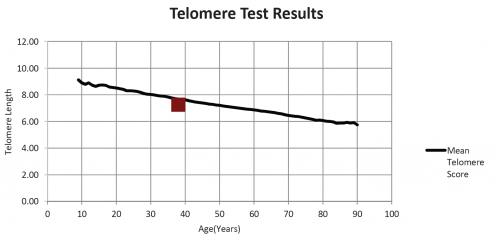DNA makes up every cell in our body and telomeres protect our DNA and every cell from damage which allows the cells to replicate correctly. As we age, cells die or become damaged which requires the surrounding cells replicate, or make new cells, replacing the aging, damaged cells. Telomeres are like the plastic ends on your shoelaces, protecting the ends of chromosome from “fraying” after a cell replicates. Just like your shoelaces, if a telomere becomes too short to do its job, your chromosome you’re your shoelace, begins to unravel, or fray at the ends. Each time a cell replicates, the telomere becomes a little shorter until eventually it becomes too short to allow the cell to replicate or divide. When this happens, the cell becomes inactive, dies, or begins to malfunction and divides incorrectly.
Shorter telomeres have been associated with aging and a higher rate of chronic diseases such as diabetes, cardiovascular disease, neurological diseases, and cancer. When a telomere is too short to protect the chromosome, cells can malfunction causing genetic material to become confused or destroyed leading to aging and chronic disease. Researchers have shown that longer telomeres are associated with a longer life.





